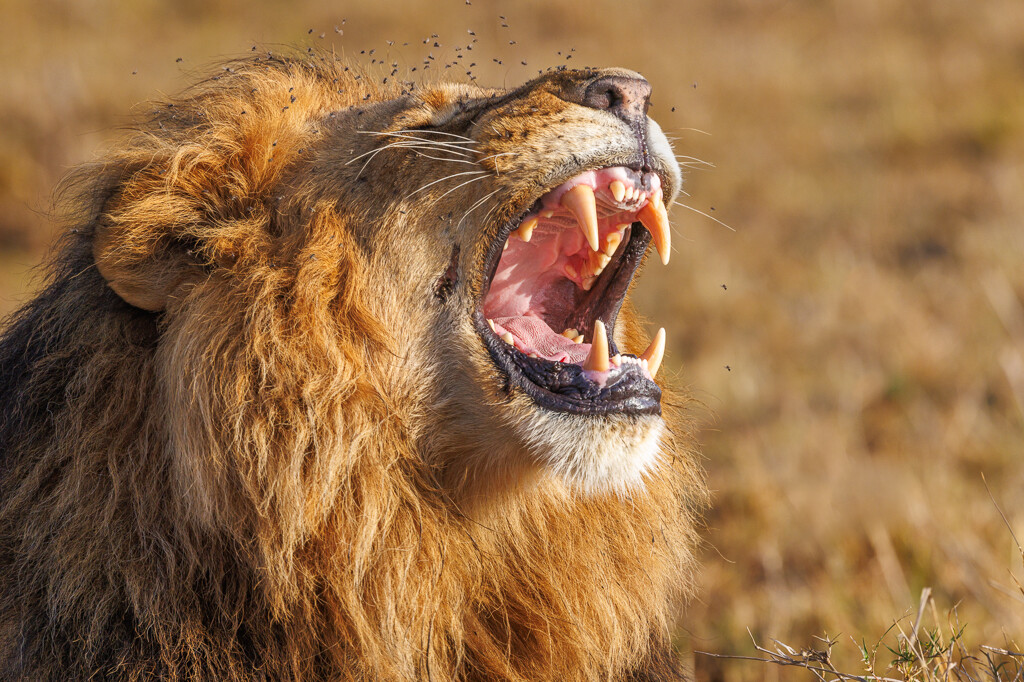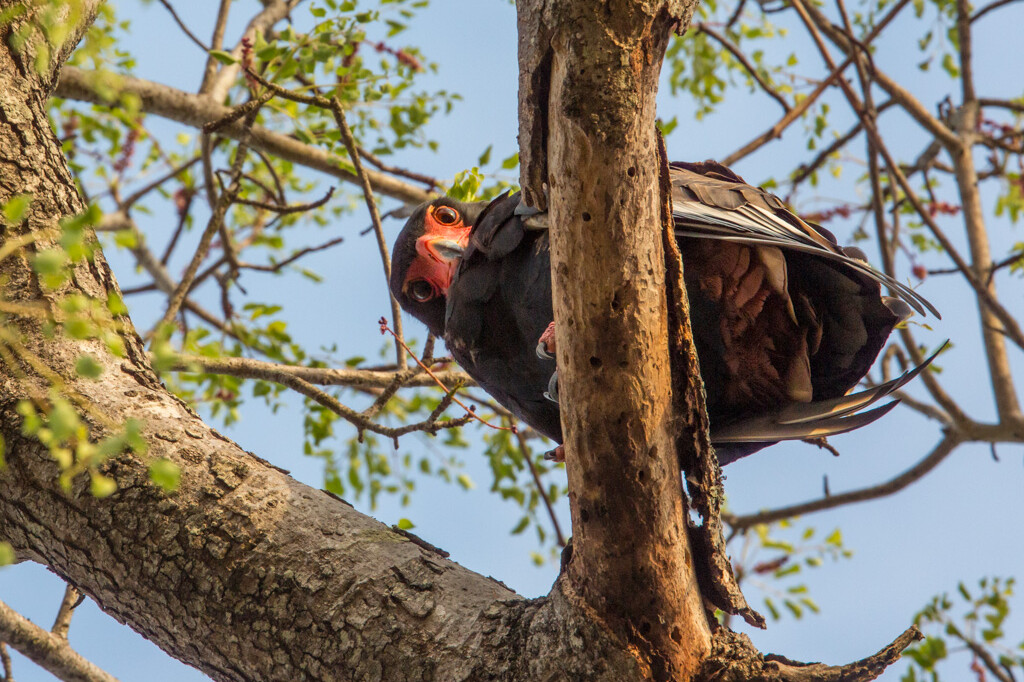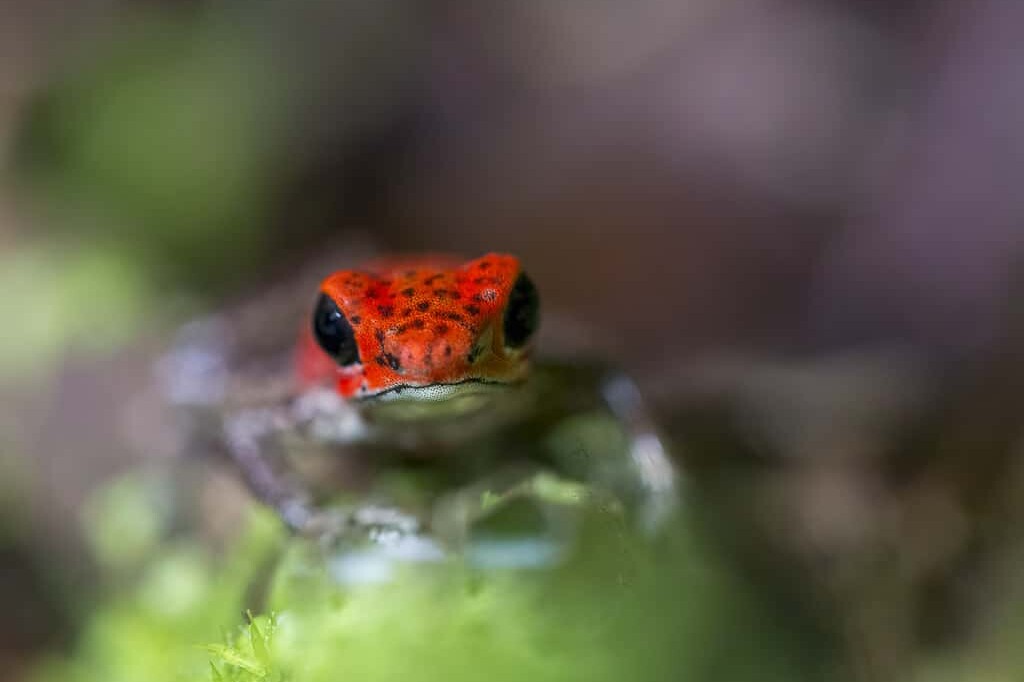A View from the Hide
(This post about my time in a photography hide was previously published on my Ko‑fi page with some image changes.)
A Visit to a Photography Hide
This past week I spent four nights working in a waterhole photography hide at Lentorre Lodge in Kenya’s southern Great Rift Valley. A “hide” (also referred to as a blind) is a camouflaged “space” allowing you to approach birds or wildlife without them knowing you are there. There are all kinds of hides and blinds available—one person, portable blinds, floating hides or permanent hides. The photography hide I spent time in is a physical structure built into the ground with viewing windows that look out at eye level on a watering hole.
Life at the Waterhole
My objective for this adventure was to photograph nocturnal wildlife activity at a waterhole. Conditions in many parts of Kenya right now are extremely dry. The Olkirimatian Conservancy where I was visiting was no exception. It was parched and daytime temperatures hit highs of 43 Celsius. Lentorre Lodge, my home for four nights, constructed its hide in front of a permanent waterhole they built and continually fill. As other water sources dry up in summer, this waterhole becomes very popular–and much needed!



Twenty-four Hour Action at the Photography Hide!
There is activity throughout the day. Birds galore, baboons, zebras, impala, waterbuck, buffalo, giraffe and dik-dik all made regular appearances-day or night-or both. One cheetah, who had not been seen in many months, and a large bull elephant also stopped by for a drink. The nocturnal animals only came to drink in the very dark of night. Leopard, porcupine, hyena, genets and sivets.



Precarious Posture
The waterhole is a very precarious and dangerous place for most animals. The darkness of night–when most of the predators come out to hunt–is already a threat. To drink, they have to turn their backs on potential predators, and some, like the giraffe, require adopting very vulnerable postures to enable them to drink. A giraffe needs to bend over ten feet to quench its thirst, putting itself in a very dangerous position. Because they get most of their water from vegetation, it is only necessary for them to drink every 2-3 days and they can last almost three weeks without water. Once they do get themselves down to the water, they can drink over 50 litres!

The individuals I watched remained skittish and on very high alert. It was fascinating to observe this behaviour from the photography hide. In one instance, it took more than forty minutes for two giraffes to chance a drink. Prior to approaching, they spent time looking in every direction. They would come close, stand still for a very long time, move away and come back. The small herds of zebras and impala would come close, get spooked and run off. Even while drinking, if one individual was spooked, they all jumped back. They know their predators are out at night—but thirst is a mighty motivator during a drought. So they tentatively approach.
A Typical Day in the Photography Hide
My routine most days was to go down to the hide in late afternoon when the bird activity was hopping and the light less harsh. It was wonderful to watch zebras, baboons and antelope coming and going in the warm, end-of-day light. I would take a break for dinner around 6 PM and then return to the hide at 7 PM. Exhausted from jetlag and the heat–when I left Canada it was -24C–I never made it through a full night, but I was there until anywhere from 2 AM to 3:30 AM. Some nights there was a constant flow of wild life dropping by the animal bar; other nights were less busy.

The Highlight of the Hide
On my last night I was alone in the hide and it was exceptionally quiet. I was getting antsy by 11 PM, but my patience was rewarded when the animal on the top of my wish list suddenly turned up! After three nights of waiting I was giving up hope, but on night four the gorgeous striped hyena made an appearance! In 15 years I have only had one or two partial glimpses of the striped hyena at night. They are solitary, very shy and elusive—quite different from their bigger, rowdy, spotted cousins. I have visited areas where they are known to live, but sightings never materialized. To find myself sitting about 35 feet away, looking directly into its eyes, was quite a thrill!

That same evening at around midnight, I was lucky to photograph an African wild cat. I last saw one of these beauties in Namibia in 2008. Even though it took four nights of endless hours sitting and waiting, it was very special to photograph two such beautiful animals for the first time!

After four days it was time to move on to the Maasai Mara, where the daytime temperatures drop to a slightly more tolerable 32C! I am looking forward to seeing some old feline friends.

One more thing…
Thank you very much for visiting my blog. I support myself as an artist with my photography and writing. If you enjoy my content and would like more, please consider supporting me on KO-FI.COM Becoming a member of the Armchair Wanderers or one of The Wild Bunch will give you access to exclusive member only content-including behind-the-scene safari updates from my travels. Thank you for your ongoing encouragement and promoting my passion.

NJ Wight
Image maker and storyteller, bringing my audience up close to the extraordinary wildlife that has transformed my thinking and shaped my creative expression.
More Great Posts
June 12, 2024
Lion Population: The Sad Story of Lion Math
June 1, 2024
The Bateleur Eagle: An Unusual Perspective
February 29, 2024
Photographing Safari Silhouettes
January 17, 2024
Photographing the Dragonfly in Flight
July 29, 2023
Photographing the Strawberry Poison Dart Frog
July 17, 2023








WOW! Some of use just don’t know what we are missing, buy not stepping out of our little worlds.
?❤️
So very beautiful ?
I’m excited for your adventures! Love your photography and heart!
Thanks!